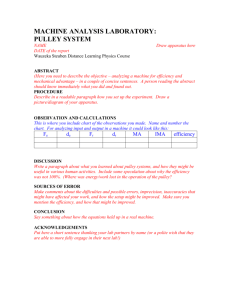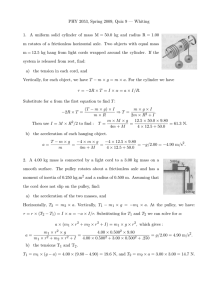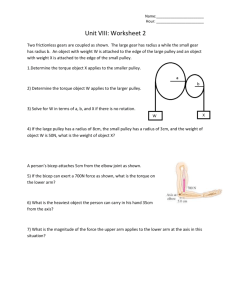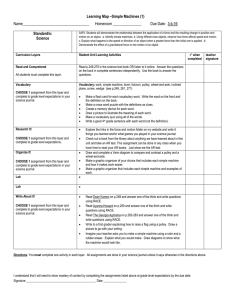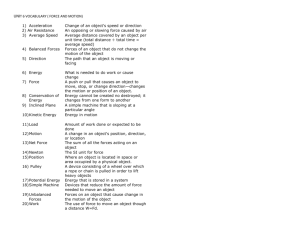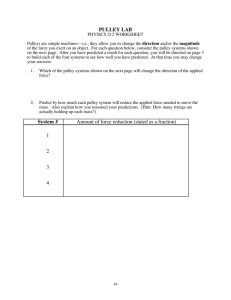9-50
advertisement
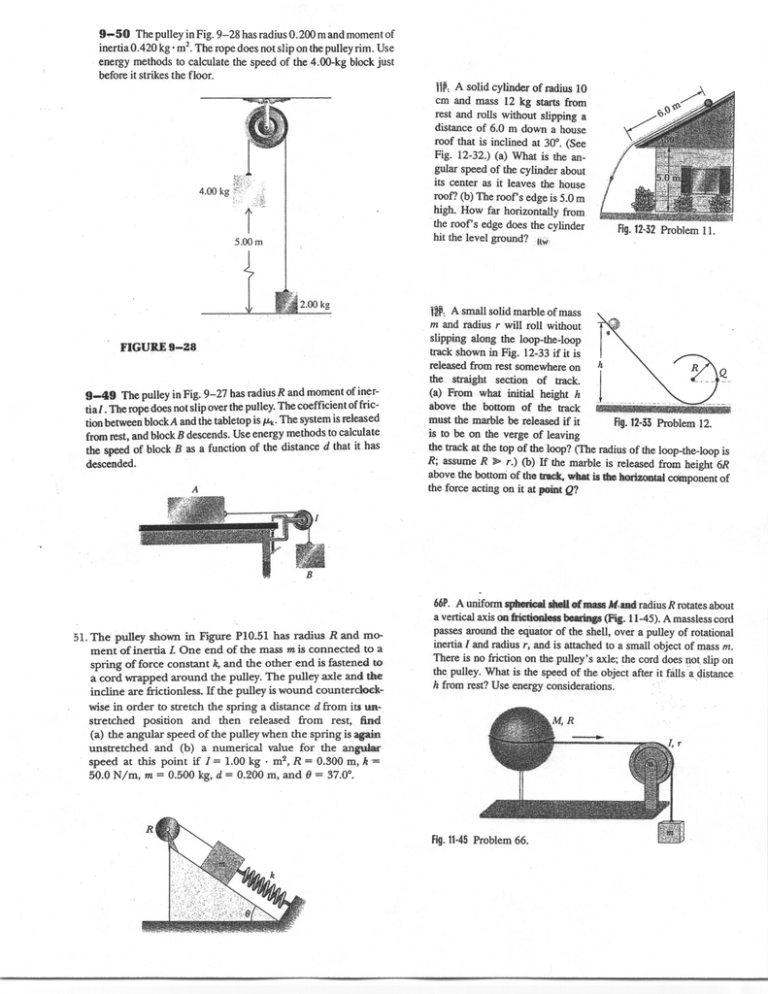
9-50 The pulley in Fig. 9-28 has radius 0.200 m and moment of inertia 0,420 kg . m2. The rope does not slip on the pulley rim. Use energy methods to calculate the speed of the 4.00".kg block just before it strikes the floor. llp. A solid cylindcr ofradius l0 cm and mass 12 kg starts from rest and rolls without stipping a distance of 6.0 m down a house roof that is inclined at 3ff. (See Fig. 12-32.) (a) What is the angular speed of the cylinder about its center as it leaves the house roofi (b) The roofls edge is 5.0 m high. How far horizontally from the roofs edge does the cylinder hit the level ground? p* Hg. 12-52 Probtem ll. Itp. A small solid marble of mass and radius r will roll without n slipping along the loop-the-loop track shown in Fig. 12-33 if it is released from rest somewherc on rrGUx.E e-28 fte 9-49 Ttre pulley in Fig. 9-27 has radius R and moment of iner- overthe pulley' Thecoefficientof frictabletop is p1' The system is released the and btockA tionbetween frorn rest, and block I descends. Use energy methods to calculate has the speed of block B as a function of the distance d that it tial. fireropedoes notsiip descended. straight section of track (a) From what initial heigbt ft above the bosom of the track must the marble be released if it fig. 12-55 Problem 12. is to be on the verge of leaving the track at the top oftheloop? (Ibe radius ofthe loop-theJoop is R; assume ft > r.) (b) If the marble is released from height 6R above the bottom of thc erch crtd is & hwk@tal cmponent of the force acring on it at poist e? a 51. The pulley shown in Figure P10.51 has radius R and mo' ment of inertia L One end of the mass rz is connected to a spring of force constant &, and the other end is fastened to a cord wrapped around the pulley. The pulley axle and & incline axe frictionless. If the pulley is wound counterclsekwise in order to stretch the spring a distance d from iu unstretched position and then released from rest, find ff nc Sg A uniform ryinkrf cf X,ud radius.R rotates about vertical axis o ftttiahre (Fig. l1-45). A massless cord passes around the equator of the shell, over a pulley of rotational inertia / and radius r, and is attached to a small object of mass ra. There is no friction on the pulley's axle; the cord does not slip on the pulley. What is the speed of the object after it falls'a distance lr from rest? Use energy considerations 66P. (a) the angular speed of the pulley when the spring is a6pin unstretched and (b) a numerical value for the angrrbr speed at this point if /: 1.00 kg . *t,R: 0.300 m,h50.0 N,/m, z = 0.500 kg, d = 0.200 m, and 0 : 37.0'. Fig. 11-45
